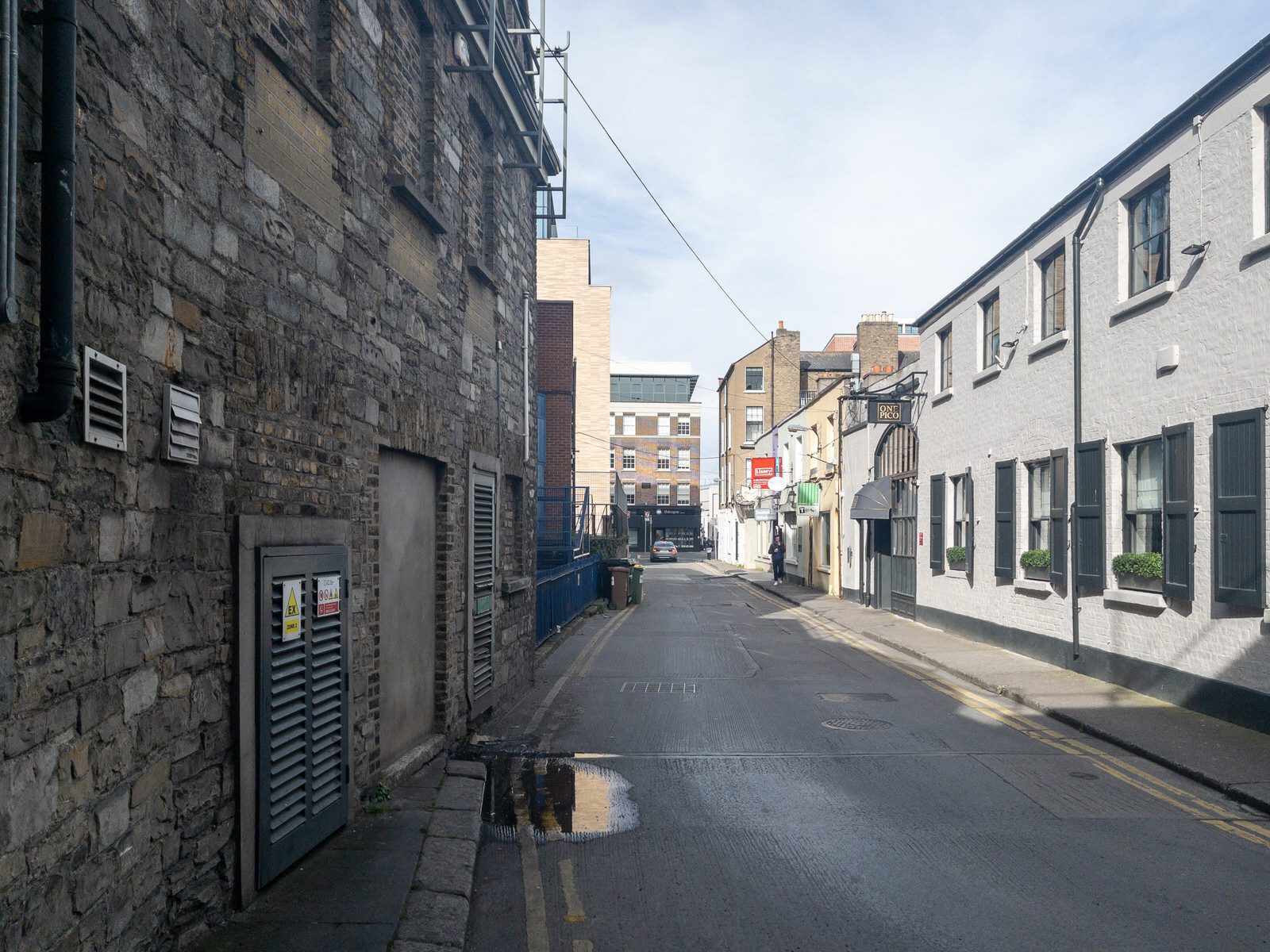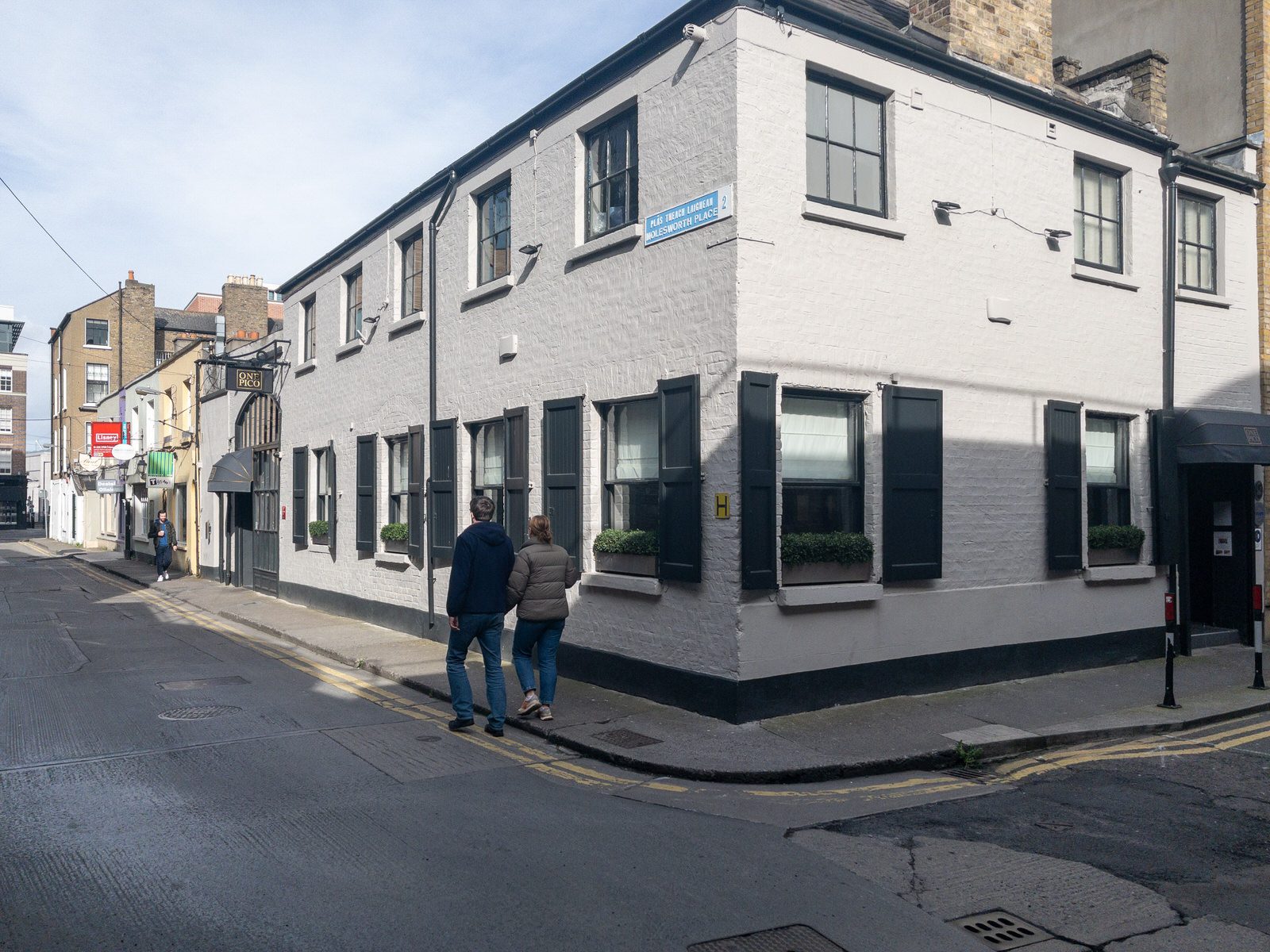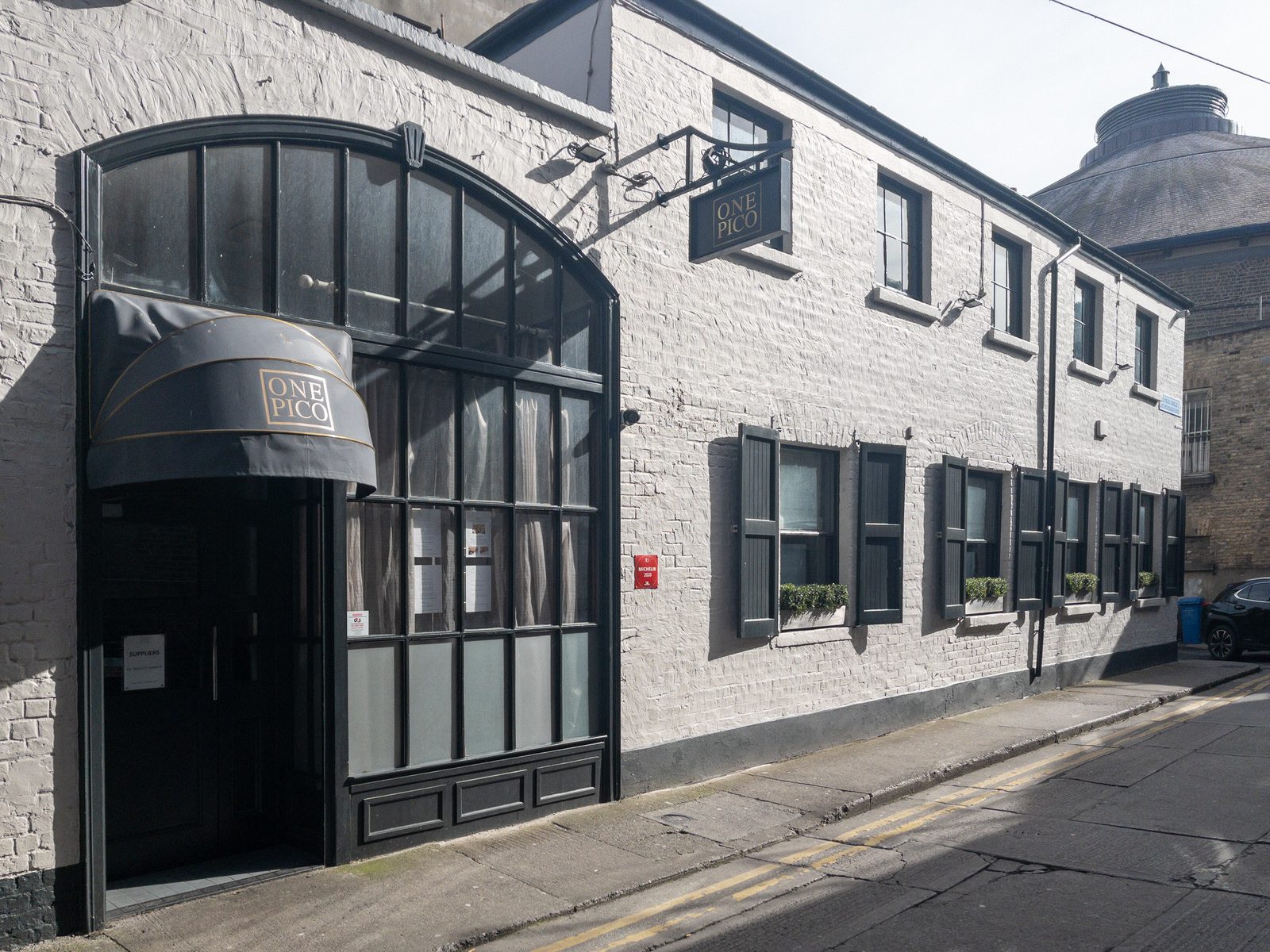NOW ON VIEW UNDER FOOTBRIDGE
There are volunteer groups who clean up sections of the canals in Dublin on a regular basis and what you see in my photographs is typical of what is dumped into the waters of the canals.
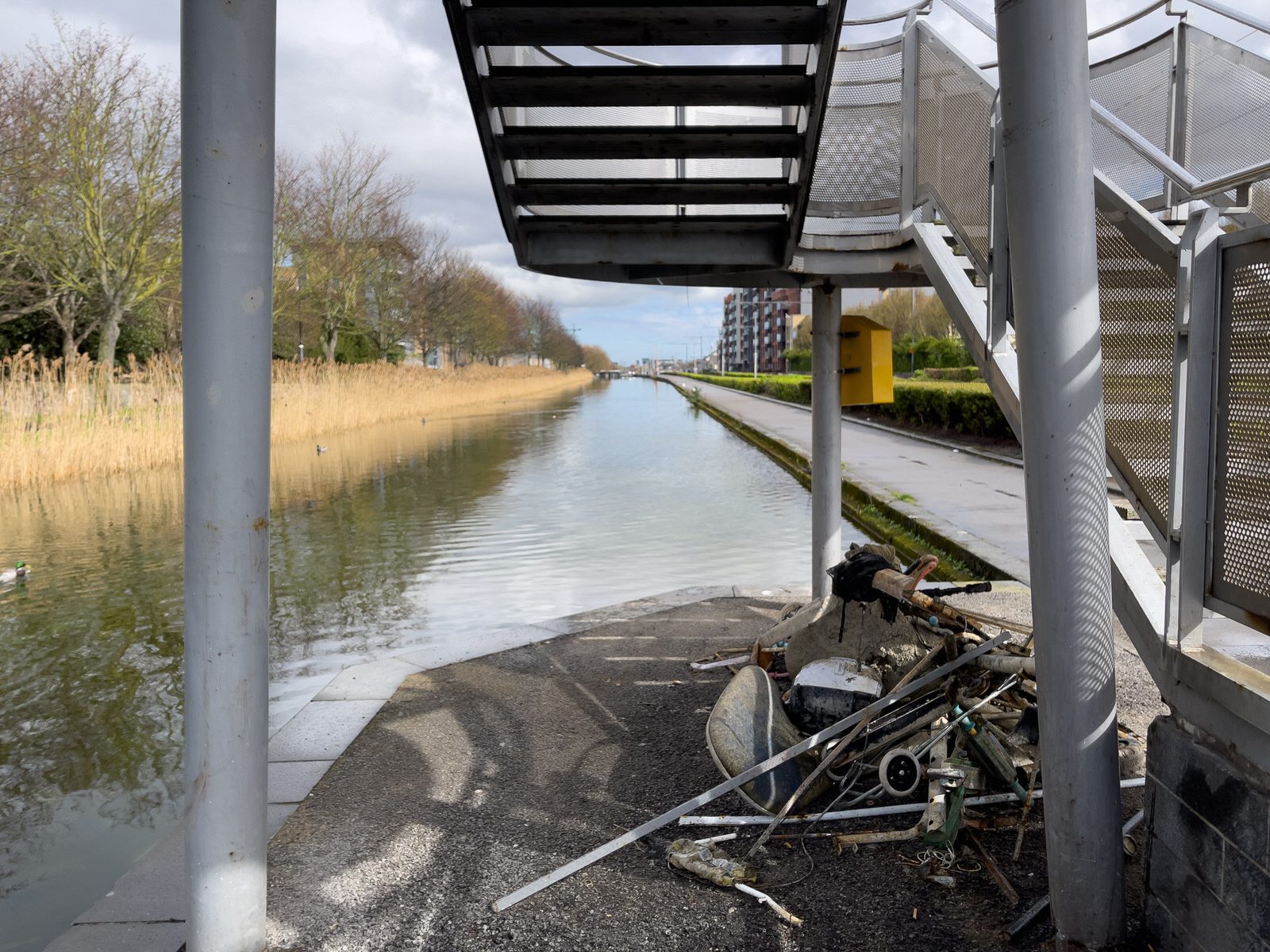
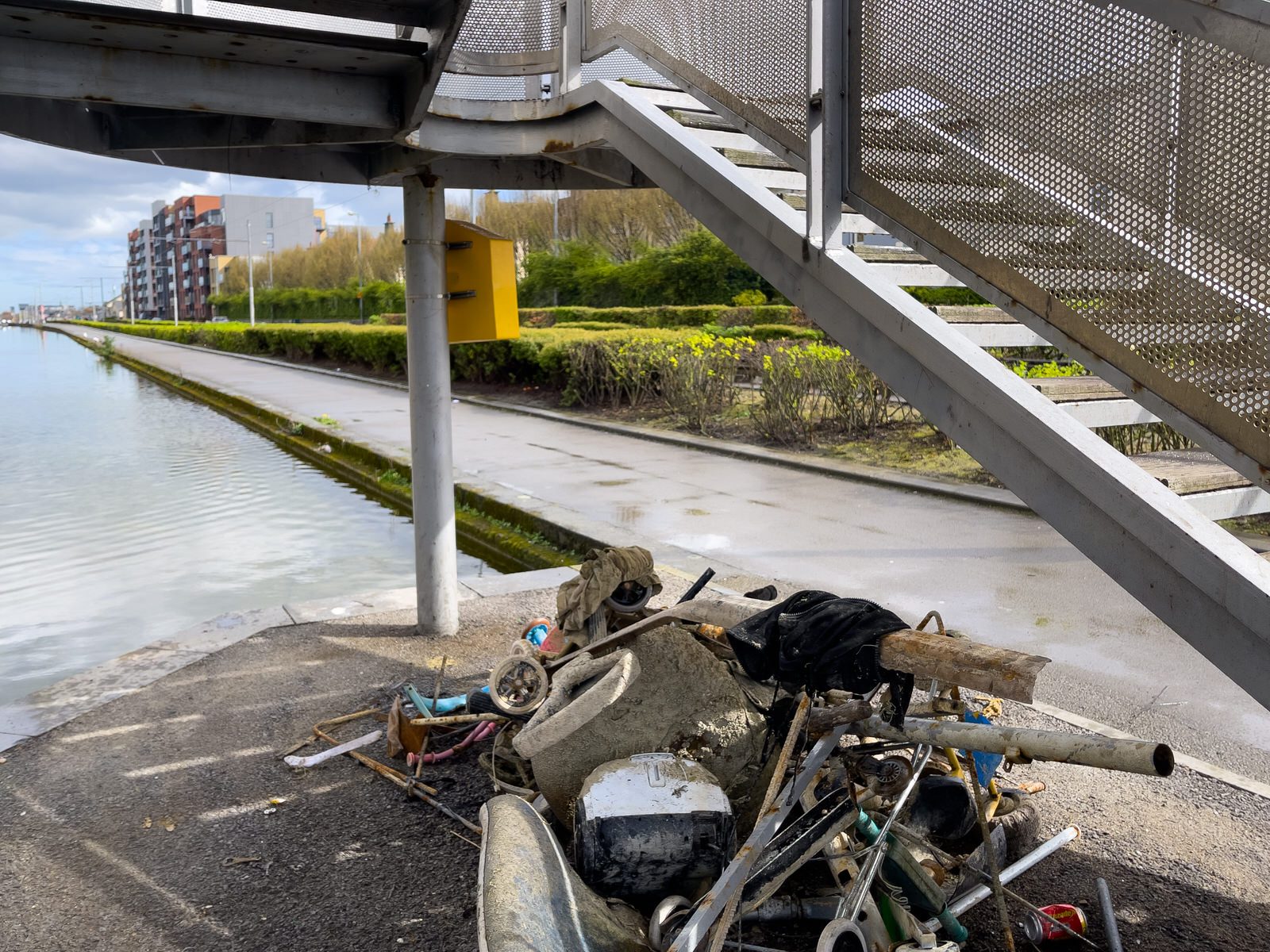

THE HEADLESS PHOTO BLOG
by infomatique
NOW ON VIEW UNDER FOOTBRIDGE
There are volunteer groups who clean up sections of the canals in Dublin on a regular basis and what you see in my photographs is typical of what is dumped into the waters of the canals.



by infomatique
SEAN WALSH MEMORIAL PARK AND THE WHITESTOWN STREAM
I have not visited this park since April 2007 and things did not go well back then as I encountered multiple problems back then. This time the tram journey was unpleasant as the trams were overcrowded but the park had greatly improved since 2007 and it was worth visiting.
I could be wrong but I believe that the Whitestown Stream is also known as the Jobstown Stream.
This park is located in the heart of Tallaght on the N81. Ornamental formal gardens lie side by side with attractive water features such as ponds and waterfalls: extensive tree planting allows shaded areas for relaxation. Pedestrian paths around the ponds allow for a pleasant walks and passive recreation.
The park has horticultural interest all year round with displays of flowering bulbs in the spring, green trees and wildflowers in the Summer, and wonderful display of colour in Autumn. The landscape of Sean Walsh Park contains a range of habitats including stream, woodland, grassland and lake. The grey squirrel, rabbit, common frog and pipistrelle bat can all be found in the park. The launch of the Sean Walsh Tree trail took place on 4th October 2018, on the day the Green Flag was raised in Sean Walsh Park. There are 15 tree species in the tree trail with an information plaque at each point. Tree trail Information sheets giving information about each tree species can be downloaded This downloadable A4 sheet leaves a space for children to carry out a rubbing of the plaques. Tallaght Stadium was officially opened in the park in May 2009 and is a purpose-built, 6,000-seat, state-of-the-art football stadium.
![SEAN WALSH MEMORIAL PARK AND THE WHITESTOWN STREAM [RED FOOTBRIDGES]-215870-1 RED FOOTBRIDGES 001](https://excellentstreetimages.com/2023HeadlessPhotoBlogWordPress/wp-content/uploads/2023/03/SEAN-WALSH-MEMORIAL-PARK-AND-THE-WHITESTOWN-STREAM-RED-FOOTBRIDGES-215870-1.jpg)
![SEAN WALSH MEMORIAL PARK AND THE WHITESTOWN STREAM [RED FOOTBRIDGES]-215871-1 RED FOOTBRIDGES 022](https://excellentstreetimages.com/2023HeadlessPhotoBlogWordPress/wp-content/uploads/2023/03/SEAN-WALSH-MEMORIAL-PARK-AND-THE-WHITESTOWN-STREAM-RED-FOOTBRIDGES-215871-1.jpg)
![SEAN WALSH MEMORIAL PARK AND THE WHITESTOWN STREAM [RED FOOTBRIDGES]-215872-1 RED FOOTBRIDGES 021](https://excellentstreetimages.com/2023HeadlessPhotoBlogWordPress/wp-content/uploads/2023/03/SEAN-WALSH-MEMORIAL-PARK-AND-THE-WHITESTOWN-STREAM-RED-FOOTBRIDGES-215872-1.jpg)
![SEAN WALSH MEMORIAL PARK AND THE WHITESTOWN STREAM [RED FOOTBRIDGES]-215865-1 RED FOOTBRIDGES 020](https://excellentstreetimages.com/2023HeadlessPhotoBlogWordPress/wp-content/uploads/2023/03/SEAN-WALSH-MEMORIAL-PARK-AND-THE-WHITESTOWN-STREAM-RED-FOOTBRIDGES-215865-1.jpg)
![SEAN WALSH MEMORIAL PARK AND THE WHITESTOWN STREAM [RED FOOTBRIDGES]-215866-1 RED FOOTBRIDGES 019](https://excellentstreetimages.com/2023HeadlessPhotoBlogWordPress/wp-content/uploads/2023/03/SEAN-WALSH-MEMORIAL-PARK-AND-THE-WHITESTOWN-STREAM-RED-FOOTBRIDGES-215866-1.jpg)
![SEAN WALSH MEMORIAL PARK AND THE WHITESTOWN STREAM [RED FOOTBRIDGES]-215867-1 RED FOOTBRIDGES 018](https://excellentstreetimages.com/2023HeadlessPhotoBlogWordPress/wp-content/uploads/2023/03/SEAN-WALSH-MEMORIAL-PARK-AND-THE-WHITESTOWN-STREAM-RED-FOOTBRIDGES-215867-1.jpg)
![SEAN WALSH MEMORIAL PARK AND THE WHITESTOWN STREAM [RED FOOTBRIDGES]-215868-1 RED FOOTBRIDGES 017](https://excellentstreetimages.com/2023HeadlessPhotoBlogWordPress/wp-content/uploads/2023/03/SEAN-WALSH-MEMORIAL-PARK-AND-THE-WHITESTOWN-STREAM-RED-FOOTBRIDGES-215868-1.jpg)
![SEAN WALSH MEMORIAL PARK AND THE WHITESTOWN STREAM [RED FOOTBRIDGES]-215869-1 RED FOOTBRIDGES 016](https://excellentstreetimages.com/2023HeadlessPhotoBlogWordPress/wp-content/uploads/2023/03/SEAN-WALSH-MEMORIAL-PARK-AND-THE-WHITESTOWN-STREAM-RED-FOOTBRIDGES-215869-1.jpg)
![SEAN WALSH MEMORIAL PARK AND THE WHITESTOWN STREAM [RED FOOTBRIDGES]-215859-1 RED FOOTBRIDGES 015](https://excellentstreetimages.com/2023HeadlessPhotoBlogWordPress/wp-content/uploads/2023/03/SEAN-WALSH-MEMORIAL-PARK-AND-THE-WHITESTOWN-STREAM-RED-FOOTBRIDGES-215859-1.jpg)
![SEAN WALSH MEMORIAL PARK AND THE WHITESTOWN STREAM [RED FOOTBRIDGES]-215860-1 RED FOOTBRIDGES 014](https://excellentstreetimages.com/2023HeadlessPhotoBlogWordPress/wp-content/uploads/2023/03/SEAN-WALSH-MEMORIAL-PARK-AND-THE-WHITESTOWN-STREAM-RED-FOOTBRIDGES-215860-1.jpg)
![SEAN WALSH MEMORIAL PARK AND THE WHITESTOWN STREAM [RED FOOTBRIDGES]-215861-1 RED FOOTBRIDGES 013](https://excellentstreetimages.com/2023HeadlessPhotoBlogWordPress/wp-content/uploads/2023/03/SEAN-WALSH-MEMORIAL-PARK-AND-THE-WHITESTOWN-STREAM-RED-FOOTBRIDGES-215861-1.jpg)
![SEAN WALSH MEMORIAL PARK AND THE WHITESTOWN STREAM [RED FOOTBRIDGES]-215862-1 RED FOOTBRIDGES 012](https://excellentstreetimages.com/2023HeadlessPhotoBlogWordPress/wp-content/uploads/2023/03/SEAN-WALSH-MEMORIAL-PARK-AND-THE-WHITESTOWN-STREAM-RED-FOOTBRIDGES-215862-1.jpg)
![SEAN WALSH MEMORIAL PARK AND THE WHITESTOWN STREAM [RED FOOTBRIDGES]-215863-1 RED FOOTBRIDGES 011](https://excellentstreetimages.com/2023HeadlessPhotoBlogWordPress/wp-content/uploads/2023/03/SEAN-WALSH-MEMORIAL-PARK-AND-THE-WHITESTOWN-STREAM-RED-FOOTBRIDGES-215863-1.jpg)
![SEAN WALSH MEMORIAL PARK AND THE WHITESTOWN STREAM [RED FOOTBRIDGES]-215864-1 RED FOOTBRIDGES 010](https://excellentstreetimages.com/2023HeadlessPhotoBlogWordPress/wp-content/uploads/2023/03/SEAN-WALSH-MEMORIAL-PARK-AND-THE-WHITESTOWN-STREAM-RED-FOOTBRIDGES-215864-1.jpg)
![SEAN WALSH MEMORIAL PARK AND THE WHITESTOWN STREAM [RED FOOTBRIDGES]-215850-1 RED FOOTBRIDGES 009](https://excellentstreetimages.com/2023HeadlessPhotoBlogWordPress/wp-content/uploads/2023/03/SEAN-WALSH-MEMORIAL-PARK-AND-THE-WHITESTOWN-STREAM-RED-FOOTBRIDGES-215850-1.jpg)
![SEAN WALSH MEMORIAL PARK AND THE WHITESTOWN STREAM [RED FOOTBRIDGES]-215851-1 RED FOOTBRIDGES 008](https://excellentstreetimages.com/2023HeadlessPhotoBlogWordPress/wp-content/uploads/2023/03/SEAN-WALSH-MEMORIAL-PARK-AND-THE-WHITESTOWN-STREAM-RED-FOOTBRIDGES-215851-1.jpg)
![SEAN WALSH MEMORIAL PARK AND THE WHITESTOWN STREAM [RED FOOTBRIDGES]-215852-1 RED FOOTBRIDGES 007](https://excellentstreetimages.com/2023HeadlessPhotoBlogWordPress/wp-content/uploads/2023/03/SEAN-WALSH-MEMORIAL-PARK-AND-THE-WHITESTOWN-STREAM-RED-FOOTBRIDGES-215852-1.jpg)
![SEAN WALSH MEMORIAL PARK AND THE WHITESTOWN STREAM [RED FOOTBRIDGES]-215853-1 RED FOOTBRIDGES 006](https://excellentstreetimages.com/2023HeadlessPhotoBlogWordPress/wp-content/uploads/2023/03/SEAN-WALSH-MEMORIAL-PARK-AND-THE-WHITESTOWN-STREAM-RED-FOOTBRIDGES-215853-1.jpg)
![SEAN WALSH MEMORIAL PARK AND THE WHITESTOWN STREAM [RED FOOTBRIDGES]-215854-1 RED FOOTBRIDGES 005](https://excellentstreetimages.com/2023HeadlessPhotoBlogWordPress/wp-content/uploads/2023/03/SEAN-WALSH-MEMORIAL-PARK-AND-THE-WHITESTOWN-STREAM-RED-FOOTBRIDGES-215854-1.jpg)
![SEAN WALSH MEMORIAL PARK AND THE WHITESTOWN STREAM [RED FOOTBRIDGES]-215855-1 RED FOOTBRIDGES 004](https://excellentstreetimages.com/2023HeadlessPhotoBlogWordPress/wp-content/uploads/2023/03/SEAN-WALSH-MEMORIAL-PARK-AND-THE-WHITESTOWN-STREAM-RED-FOOTBRIDGES-215855-1.jpg)
![SEAN WALSH MEMORIAL PARK AND THE WHITESTOWN STREAM [RED FOOTBRIDGES]-215856-1 RED FOOTBRIDGES 003](https://excellentstreetimages.com/2023HeadlessPhotoBlogWordPress/wp-content/uploads/2023/03/SEAN-WALSH-MEMORIAL-PARK-AND-THE-WHITESTOWN-STREAM-RED-FOOTBRIDGES-215856-1.jpg)
![SEAN WALSH MEMORIAL PARK AND THE WHITESTOWN STREAM [RED FOOTBRIDGES]-215857-1 RED FOOTBRIDGES 002](https://excellentstreetimages.com/2023HeadlessPhotoBlogWordPress/wp-content/uploads/2023/03/SEAN-WALSH-MEMORIAL-PARK-AND-THE-WHITESTOWN-STREAM-RED-FOOTBRIDGES-215857-1.jpg)
![SEAN WALSH MEMORIAL PARK AND THE WHITESTOWN STREAM [RED FOOTBRIDGES]-215858-1 RED FOOTBRIDGES 023](https://excellentstreetimages.com/2023HeadlessPhotoBlogWordPress/wp-content/uploads/2023/03/SEAN-WALSH-MEMORIAL-PARK-AND-THE-WHITESTOWN-STREAM-RED-FOOTBRIDGES-215858-1.jpg)
by infomatique
CHARLEMONT STREET REGENERATION PROJECT
This was my first time to visit this new complex.
Charlemont Square is the second phase of the transformative Charlemont Street regeneration placemaking project in the heart of Dublin 2. This €210 million mixed-use development involved the reimaging of c.13,000m2 – mostly derelict – space on a logistically challenging site close to the city centre. The creation of a focal point for the local community was a key ambition of this development, which commenced in January 2018 and was completed in December 2022.
Works consisted of the demolition and site clearance of four existing residential blocks, including specialist asbestos removal, prior to the construction of six multi-storey blocks.
This phase of regeneration delivered 96 apartments, 355,000ft² of Grade A office space and 30,000ft² of retail space for the local area.
The residential portion of this project comprises a unique collection of one, two and three-bed apartments, designed and delivered to a high quality.
The office incorporates Grade 2 basement over two levels, cast in-situ RC frame with bespoke curtain walling and glazing with large areas of brick and stone cladding. Internally, the accommodation provides efficient floor plates with suspended ceilings with 650mm void, 150mm raised access floors and minimised internal columns with 12m clear spans. Roof terraces and tenant facilities including secure basement car parking and bicycle spaces, showers and drying facilities are also provided. The scheme has a WireScore rating of Platinum, LEED Gold, and an A3 BER rating.
At street level, the retail space incorporates convenience retail, food and beverage uses and an art studio, complementing the residential and office accommodation.
[March 2014] The Charlemont Street flat complex near Ranelagh was to have been redeveloped as a public-private partnership scheme including shops, restaurants, offices, as well as 260 new apartments. However, despite beginning demolition, including razing Scott’s 1944 building Ffrench Mullen House, the council had been unable to finalise a deal on the regeneration project. Independent city councillor Mannix Flynn sought to save Ffrench Mullen House, because its demolition was ethically wrong given the block was a “one-off social housing unit, designed by Michael Scott in 1944 during the Emergency”, and that it should be reused. Ffrench Mullen House was named after Madeline Ffrench Mullen who developed the nearby St Ultan’s Hospital for Women and Infants in 1919 in response to the dire socioeconomic conditions in Dublin.
![CHARLEMONT SQUARE [CHARLEMONT STREET REGENERATION PROJECT]-215603-1 CHARLEMONT SQUARE 26 MARCH 2023 037](https://excellentstreetimages.com/2023HeadlessPhotoBlogWordPress/wp-content/uploads/2023/03/CHARLEMONT-SQUARE-CHARLEMONT-STREET-REGENERATION-PROJECT-215603-1.jpg)
![CHARLEMONT SQUARE [CHARLEMONT STREET REGENERATION PROJECT]-215604-1 CHARLEMONT SQUARE 26 MARCH 2023 036](https://excellentstreetimages.com/2023HeadlessPhotoBlogWordPress/wp-content/uploads/2023/03/CHARLEMONT-SQUARE-CHARLEMONT-STREET-REGENERATION-PROJECT-215604-1.jpg)
![CHARLEMONT SQUARE [CHARLEMONT STREET REGENERATION PROJECT]-215605-1 CHARLEMONT SQUARE 26 MARCH 2023 035](https://excellentstreetimages.com/2023HeadlessPhotoBlogWordPress/wp-content/uploads/2023/03/CHARLEMONT-SQUARE-CHARLEMONT-STREET-REGENERATION-PROJECT-215605-1.jpg)
![CHARLEMONT SQUARE [CHARLEMONT STREET REGENERATION PROJECT]-215606-1 CHARLEMONT SQUARE 26 MARCH 2023 034](https://excellentstreetimages.com/2023HeadlessPhotoBlogWordPress/wp-content/uploads/2023/03/CHARLEMONT-SQUARE-CHARLEMONT-STREET-REGENERATION-PROJECT-215606-1.jpg)
![CHARLEMONT SQUARE [CHARLEMONT STREET REGENERATION PROJECT]-215607-1 CHARLEMONT SQUARE 26 MARCH 2023 033](https://excellentstreetimages.com/2023HeadlessPhotoBlogWordPress/wp-content/uploads/2023/03/CHARLEMONT-SQUARE-CHARLEMONT-STREET-REGENERATION-PROJECT-215607-1.jpg)
![CHARLEMONT SQUARE [CHARLEMONT STREET REGENERATION PROJECT]-215608-1 CHARLEMONT SQUARE 26 MARCH 2023 032](https://excellentstreetimages.com/2023HeadlessPhotoBlogWordPress/wp-content/uploads/2023/03/CHARLEMONT-SQUARE-CHARLEMONT-STREET-REGENERATION-PROJECT-215608-1.jpg)
![CHARLEMONT SQUARE [CHARLEMONT STREET REGENERATION PROJECT]-215609-1 CHARLEMONT SQUARE 26 MARCH 2023 031](https://excellentstreetimages.com/2023HeadlessPhotoBlogWordPress/wp-content/uploads/2023/03/CHARLEMONT-SQUARE-CHARLEMONT-STREET-REGENERATION-PROJECT-215609-1.jpg)
![CHARLEMONT SQUARE [CHARLEMONT STREET REGENERATION PROJECT]-215610-1 CHARLEMONT SQUARE 26 MARCH 2023 030](https://excellentstreetimages.com/2023HeadlessPhotoBlogWordPress/wp-content/uploads/2023/03/CHARLEMONT-SQUARE-CHARLEMONT-STREET-REGENERATION-PROJECT-215610-1.jpg)
![CHARLEMONT SQUARE [CHARLEMONT STREET REGENERATION PROJECT]-215611-1 CHARLEMONT SQUARE 26 MARCH 2023 029](https://excellentstreetimages.com/2023HeadlessPhotoBlogWordPress/wp-content/uploads/2023/03/CHARLEMONT-SQUARE-CHARLEMONT-STREET-REGENERATION-PROJECT-215611-1.jpg)
![CHARLEMONT SQUARE [CHARLEMONT STREET REGENERATION PROJECT]-215594-1 CHARLEMONT SQUARE 26 MARCH 2023 028](https://excellentstreetimages.com/2023HeadlessPhotoBlogWordPress/wp-content/uploads/2023/03/CHARLEMONT-SQUARE-CHARLEMONT-STREET-REGENERATION-PROJECT-215594-1.jpg)
![CHARLEMONT SQUARE [CHARLEMONT STREET REGENERATION PROJECT]-215595-1 CHARLEMONT SQUARE 26 MARCH 2023 027](https://excellentstreetimages.com/2023HeadlessPhotoBlogWordPress/wp-content/uploads/2023/03/CHARLEMONT-SQUARE-CHARLEMONT-STREET-REGENERATION-PROJECT-215595-1.jpg)
![CHARLEMONT SQUARE [CHARLEMONT STREET REGENERATION PROJECT]-215596-1 CHARLEMONT SQUARE 26 MARCH 2023 026](https://excellentstreetimages.com/2023HeadlessPhotoBlogWordPress/wp-content/uploads/2023/03/CHARLEMONT-SQUARE-CHARLEMONT-STREET-REGENERATION-PROJECT-215596-1.jpg)
![CHARLEMONT SQUARE [CHARLEMONT STREET REGENERATION PROJECT]-215597-1 CHARLEMONT SQUARE 26 MARCH 2023 025](https://excellentstreetimages.com/2023HeadlessPhotoBlogWordPress/wp-content/uploads/2023/03/CHARLEMONT-SQUARE-CHARLEMONT-STREET-REGENERATION-PROJECT-215597-1.jpg)
![CHARLEMONT SQUARE [CHARLEMONT STREET REGENERATION PROJECT]-215598-1 CHARLEMONT SQUARE 26 MARCH 2023 024](https://excellentstreetimages.com/2023HeadlessPhotoBlogWordPress/wp-content/uploads/2023/03/CHARLEMONT-SQUARE-CHARLEMONT-STREET-REGENERATION-PROJECT-215598-1.jpg)
![CHARLEMONT SQUARE [CHARLEMONT STREET REGENERATION PROJECT]-215599-1 CHARLEMONT SQUARE 26 MARCH 2023 023](https://excellentstreetimages.com/2023HeadlessPhotoBlogWordPress/wp-content/uploads/2023/03/CHARLEMONT-SQUARE-CHARLEMONT-STREET-REGENERATION-PROJECT-215599-1.jpg)
![CHARLEMONT SQUARE [CHARLEMONT STREET REGENERATION PROJECT]-215600-1 CHARLEMONT SQUARE 26 MARCH 2023 022](https://excellentstreetimages.com/2023HeadlessPhotoBlogWordPress/wp-content/uploads/2023/03/CHARLEMONT-SQUARE-CHARLEMONT-STREET-REGENERATION-PROJECT-215600-1.jpg)
![CHARLEMONT SQUARE [CHARLEMONT STREET REGENERATION PROJECT]-215601-1 CHARLEMONT SQUARE 26 MARCH 2023 021](https://excellentstreetimages.com/2023HeadlessPhotoBlogWordPress/wp-content/uploads/2023/03/CHARLEMONT-SQUARE-CHARLEMONT-STREET-REGENERATION-PROJECT-215601-1.jpg)
![CHARLEMONT SQUARE [CHARLEMONT STREET REGENERATION PROJECT]-215602-1 CHARLEMONT SQUARE 26 MARCH 2023 020](https://excellentstreetimages.com/2023HeadlessPhotoBlogWordPress/wp-content/uploads/2023/03/CHARLEMONT-SQUARE-CHARLEMONT-STREET-REGENERATION-PROJECT-215602-1.jpg)
![CHARLEMONT SQUARE [CHARLEMONT STREET REGENERATION PROJECT]-215585-1 CHARLEMONT SQUARE 26 MARCH 2023 019](https://excellentstreetimages.com/2023HeadlessPhotoBlogWordPress/wp-content/uploads/2023/03/CHARLEMONT-SQUARE-CHARLEMONT-STREET-REGENERATION-PROJECT-215585-1.jpg)
![CHARLEMONT SQUARE [CHARLEMONT STREET REGENERATION PROJECT]-215586-1 CHARLEMONT SQUARE 26 MARCH 2023 018](https://excellentstreetimages.com/2023HeadlessPhotoBlogWordPress/wp-content/uploads/2023/03/CHARLEMONT-SQUARE-CHARLEMONT-STREET-REGENERATION-PROJECT-215586-1.jpg)
![CHARLEMONT SQUARE [CHARLEMONT STREET REGENERATION PROJECT]-215587-1 CHARLEMONT SQUARE 26 MARCH 2023 017](https://excellentstreetimages.com/2023HeadlessPhotoBlogWordPress/wp-content/uploads/2023/03/CHARLEMONT-SQUARE-CHARLEMONT-STREET-REGENERATION-PROJECT-215587-1.jpg)
![CHARLEMONT SQUARE [CHARLEMONT STREET REGENERATION PROJECT]-215588-1 CHARLEMONT SQUARE 26 MARCH 2023 016](https://excellentstreetimages.com/2023HeadlessPhotoBlogWordPress/wp-content/uploads/2023/03/CHARLEMONT-SQUARE-CHARLEMONT-STREET-REGENERATION-PROJECT-215588-1.jpg)
![CHARLEMONT SQUARE [CHARLEMONT STREET REGENERATION PROJECT]-215589-1 CHARLEMONT SQUARE 26 MARCH 2023 015](https://excellentstreetimages.com/2023HeadlessPhotoBlogWordPress/wp-content/uploads/2023/03/CHARLEMONT-SQUARE-CHARLEMONT-STREET-REGENERATION-PROJECT-215589-1.jpg)
![CHARLEMONT SQUARE [CHARLEMONT STREET REGENERATION PROJECT]-215590-1 CHARLEMONT SQUARE 26 MARCH 2023 014](https://excellentstreetimages.com/2023HeadlessPhotoBlogWordPress/wp-content/uploads/2023/03/CHARLEMONT-SQUARE-CHARLEMONT-STREET-REGENERATION-PROJECT-215590-1.jpg)
![CHARLEMONT SQUARE [CHARLEMONT STREET REGENERATION PROJECT]-215591-1 CHARLEMONT SQUARE 26 MARCH 2023 013](https://excellentstreetimages.com/2023HeadlessPhotoBlogWordPress/wp-content/uploads/2023/03/CHARLEMONT-SQUARE-CHARLEMONT-STREET-REGENERATION-PROJECT-215591-1.jpg)
![CHARLEMONT SQUARE [CHARLEMONT STREET REGENERATION PROJECT]-215592-1 CHARLEMONT SQUARE 26 MARCH 2023 012](https://excellentstreetimages.com/2023HeadlessPhotoBlogWordPress/wp-content/uploads/2023/03/CHARLEMONT-SQUARE-CHARLEMONT-STREET-REGENERATION-PROJECT-215592-1.jpg)
![CHARLEMONT SQUARE [CHARLEMONT STREET REGENERATION PROJECT]-215593-1 CHARLEMONT SQUARE 26 MARCH 2023 011](https://excellentstreetimages.com/2023HeadlessPhotoBlogWordPress/wp-content/uploads/2023/03/CHARLEMONT-SQUARE-CHARLEMONT-STREET-REGENERATION-PROJECT-215593-1.jpg)
![CHARLEMONT SQUARE [CHARLEMONT STREET REGENERATION PROJECT]-215577-1 CHARLEMONT SQUARE 26 MARCH 2023 010](https://excellentstreetimages.com/2023HeadlessPhotoBlogWordPress/wp-content/uploads/2023/03/CHARLEMONT-SQUARE-CHARLEMONT-STREET-REGENERATION-PROJECT-215577-1.jpg)
![CHARLEMONT SQUARE [CHARLEMONT STREET REGENERATION PROJECT]-215578-1 CHARLEMONT SQUARE 26 MARCH 2023 009](https://excellentstreetimages.com/2023HeadlessPhotoBlogWordPress/wp-content/uploads/2023/03/CHARLEMONT-SQUARE-CHARLEMONT-STREET-REGENERATION-PROJECT-215578-1.jpg)
![CHARLEMONT SQUARE [CHARLEMONT STREET REGENERATION PROJECT]-215579-1 CHARLEMONT SQUARE 26 MARCH 2023 008](https://excellentstreetimages.com/2023HeadlessPhotoBlogWordPress/wp-content/uploads/2023/03/CHARLEMONT-SQUARE-CHARLEMONT-STREET-REGENERATION-PROJECT-215579-1.jpg)
![CHARLEMONT SQUARE [CHARLEMONT STREET REGENERATION PROJECT]-215580-1 CHARLEMONT SQUARE 26 MARCH 2023 007](https://excellentstreetimages.com/2023HeadlessPhotoBlogWordPress/wp-content/uploads/2023/03/CHARLEMONT-SQUARE-CHARLEMONT-STREET-REGENERATION-PROJECT-215580-1.jpg)
![CHARLEMONT SQUARE [CHARLEMONT STREET REGENERATION PROJECT]-215581-1 CHARLEMONT SQUARE 26 MARCH 2023 006](https://excellentstreetimages.com/2023HeadlessPhotoBlogWordPress/wp-content/uploads/2023/03/CHARLEMONT-SQUARE-CHARLEMONT-STREET-REGENERATION-PROJECT-215581-1.jpg)
![CHARLEMONT SQUARE [CHARLEMONT STREET REGENERATION PROJECT]-215582-1 CHARLEMONT SQUARE 26 MARCH 2023 005](https://excellentstreetimages.com/2023HeadlessPhotoBlogWordPress/wp-content/uploads/2023/03/CHARLEMONT-SQUARE-CHARLEMONT-STREET-REGENERATION-PROJECT-215582-1.jpg)
![CHARLEMONT SQUARE [CHARLEMONT STREET REGENERATION PROJECT]-215583-1 CHARLEMONT SQUARE 26 MARCH 2023 004](https://excellentstreetimages.com/2023HeadlessPhotoBlogWordPress/wp-content/uploads/2023/03/CHARLEMONT-SQUARE-CHARLEMONT-STREET-REGENERATION-PROJECT-215583-1.jpg)
![CHARLEMONT SQUARE [CHARLEMONT STREET REGENERATION PROJECT]-215584-1 CHARLEMONT SQUARE 26 MARCH 2023 003](https://excellentstreetimages.com/2023HeadlessPhotoBlogWordPress/wp-content/uploads/2023/03/CHARLEMONT-SQUARE-CHARLEMONT-STREET-REGENERATION-PROJECT-215584-1.jpg)
![CHARLEMONT SQUARE [CHARLEMONT STREET REGENERATION PROJECT]-215575-1 CHARLEMONT SQUARE 26 MARCH 2023 002](https://excellentstreetimages.com/2023HeadlessPhotoBlogWordPress/wp-content/uploads/2023/03/CHARLEMONT-SQUARE-CHARLEMONT-STREET-REGENERATION-PROJECT-215575-1.jpg)
![CHARLEMONT SQUARE [CHARLEMONT STREET REGENERATION PROJECT]-215576-1 CHARLEMONT SQUARE 26 MARCH 2023 001](https://excellentstreetimages.com/2023HeadlessPhotoBlogWordPress/wp-content/uploads/2023/03/CHARLEMONT-SQUARE-CHARLEMONT-STREET-REGENERATION-PROJECT-215576-1.jpg)
by infomatique
GRAND CANAL DOCK
Grand Canal Dock originally opened in 1796, as the terminal to the Central Line of the Grand Canal, at the time was the largest dock in the world. A group of three sea locks, Camden, Buckingham and Westmoreland were built in the same year, to connect the River Liffey to Grand Canal Dock. Camden Lock being the largest of the three could facilitate sea vessels. The three locks including two central dock platforms were constructed from tooled granite and designed to accommodate the tidal fluctuations of the River Liffey.
Within 50 years of the docks completion, the sea locks were deemed obsolete. Advances in steam power, left even Camden Lock too small for the new breed of steam ship. This along with the development of the railway led to a steady decline in the use of and necessity for Grand Canal Dock and the Sea Locks.
![AREA NEAR THE THREE SEA LOCKS [GRAND CANAL DOCK]-215573-1 AREA NEAR THE THREE SEA LOCKS 030](https://excellentstreetimages.com/2023HeadlessPhotoBlogWordPress/wp-content/uploads/2023/03/AREA-NEAR-THE-THREE-SEA-LOCKS-GRAND-CANAL-DOCK-215573-1.jpg)
![AREA NEAR THE THREE SEA LOCKS [GRAND CANAL DOCK]-215574-1 AREA NEAR THE THREE SEA LOCKS 029](https://excellentstreetimages.com/2023HeadlessPhotoBlogWordPress/wp-content/uploads/2023/03/AREA-NEAR-THE-THREE-SEA-LOCKS-GRAND-CANAL-DOCK-215574-1.jpg)
![AREA NEAR THE THREE SEA LOCKS [GRAND CANAL DOCK]-215567-1 AREA NEAR THE THREE SEA LOCKS 028](https://excellentstreetimages.com/2023HeadlessPhotoBlogWordPress/wp-content/uploads/2023/03/AREA-NEAR-THE-THREE-SEA-LOCKS-GRAND-CANAL-DOCK-215567-1.jpg)
![AREA NEAR THE THREE SEA LOCKS [GRAND CANAL DOCK]-215568-1 AREA NEAR THE THREE SEA LOCKS 027](https://excellentstreetimages.com/2023HeadlessPhotoBlogWordPress/wp-content/uploads/2023/03/AREA-NEAR-THE-THREE-SEA-LOCKS-GRAND-CANAL-DOCK-215568-1.jpg)
![AREA NEAR THE THREE SEA LOCKS [GRAND CANAL DOCK]-215569-1 AREA NEAR THE THREE SEA LOCKS 026](https://excellentstreetimages.com/2023HeadlessPhotoBlogWordPress/wp-content/uploads/2023/03/AREA-NEAR-THE-THREE-SEA-LOCKS-GRAND-CANAL-DOCK-215569-1.jpg)
![AREA NEAR THE THREE SEA LOCKS [GRAND CANAL DOCK]-215570-1 AREA NEAR THE THREE SEA LOCKS 025](https://excellentstreetimages.com/2023HeadlessPhotoBlogWordPress/wp-content/uploads/2023/03/AREA-NEAR-THE-THREE-SEA-LOCKS-GRAND-CANAL-DOCK-215570-1.jpg)
![AREA NEAR THE THREE SEA LOCKS [GRAND CANAL DOCK]-215571-1 AREA NEAR THE THREE SEA LOCKS 024](https://excellentstreetimages.com/2023HeadlessPhotoBlogWordPress/wp-content/uploads/2023/03/AREA-NEAR-THE-THREE-SEA-LOCKS-GRAND-CANAL-DOCK-215571-1.jpg)
![AREA NEAR THE THREE SEA LOCKS [GRAND CANAL DOCK]-215572-1 AREA NEAR THE THREE SEA LOCKS 023](https://excellentstreetimages.com/2023HeadlessPhotoBlogWordPress/wp-content/uploads/2023/03/AREA-NEAR-THE-THREE-SEA-LOCKS-GRAND-CANAL-DOCK-215572-1.jpg)
![AREA NEAR THE THREE SEA LOCKS [GRAND CANAL DOCK]-215560-1 AREA NEAR THE THREE SEA LOCKS 022](https://excellentstreetimages.com/2023HeadlessPhotoBlogWordPress/wp-content/uploads/2023/03/AREA-NEAR-THE-THREE-SEA-LOCKS-GRAND-CANAL-DOCK-215560-1.jpg)
![AREA NEAR THE THREE SEA LOCKS [GRAND CANAL DOCK]-215561-1 AREA NEAR THE THREE SEA LOCKS 021](https://excellentstreetimages.com/2023HeadlessPhotoBlogWordPress/wp-content/uploads/2023/03/AREA-NEAR-THE-THREE-SEA-LOCKS-GRAND-CANAL-DOCK-215561-1.jpg)
![AREA NEAR THE THREE SEA LOCKS [GRAND CANAL DOCK]-215562-1 AREA NEAR THE THREE SEA LOCKS 020](https://excellentstreetimages.com/2023HeadlessPhotoBlogWordPress/wp-content/uploads/2023/03/AREA-NEAR-THE-THREE-SEA-LOCKS-GRAND-CANAL-DOCK-215562-1.jpg)
![AREA NEAR THE THREE SEA LOCKS [GRAND CANAL DOCK]-215563-1 AREA NEAR THE THREE SEA LOCKS 019](https://excellentstreetimages.com/2023HeadlessPhotoBlogWordPress/wp-content/uploads/2023/03/AREA-NEAR-THE-THREE-SEA-LOCKS-GRAND-CANAL-DOCK-215563-1.jpg)
![AREA NEAR THE THREE SEA LOCKS [GRAND CANAL DOCK]-215564-1 AREA NEAR THE THREE SEA LOCKS 018](https://excellentstreetimages.com/2023HeadlessPhotoBlogWordPress/wp-content/uploads/2023/03/AREA-NEAR-THE-THREE-SEA-LOCKS-GRAND-CANAL-DOCK-215564-1.jpg)
![AREA NEAR THE THREE SEA LOCKS [GRAND CANAL DOCK]-215565-1 AREA NEAR THE THREE SEA LOCKS 017](https://excellentstreetimages.com/2023HeadlessPhotoBlogWordPress/wp-content/uploads/2023/03/AREA-NEAR-THE-THREE-SEA-LOCKS-GRAND-CANAL-DOCK-215565-1.jpg)
![AREA NEAR THE THREE SEA LOCKS [GRAND CANAL DOCK]-215566-1 AREA NEAR THE THREE SEA LOCKS 016](https://excellentstreetimages.com/2023HeadlessPhotoBlogWordPress/wp-content/uploads/2023/03/AREA-NEAR-THE-THREE-SEA-LOCKS-GRAND-CANAL-DOCK-215566-1.jpg)
![AREA NEAR THE THREE SEA LOCKS [GRAND CANAL DOCK]-215554-1 AREA NEAR THE THREE SEA LOCKS 015](https://excellentstreetimages.com/2023HeadlessPhotoBlogWordPress/wp-content/uploads/2023/03/AREA-NEAR-THE-THREE-SEA-LOCKS-GRAND-CANAL-DOCK-215554-1.jpg)
![AREA NEAR THE THREE SEA LOCKS [GRAND CANAL DOCK]-215555-1 AREA NEAR THE THREE SEA LOCKS 014](https://excellentstreetimages.com/2023HeadlessPhotoBlogWordPress/wp-content/uploads/2023/03/AREA-NEAR-THE-THREE-SEA-LOCKS-GRAND-CANAL-DOCK-215555-1.jpg)
![AREA NEAR THE THREE SEA LOCKS [GRAND CANAL DOCK]-215556-1 AREA NEAR THE THREE SEA LOCKS 013](https://excellentstreetimages.com/2023HeadlessPhotoBlogWordPress/wp-content/uploads/2023/03/AREA-NEAR-THE-THREE-SEA-LOCKS-GRAND-CANAL-DOCK-215556-1.jpg)
![AREA NEAR THE THREE SEA LOCKS [GRAND CANAL DOCK]-215557-1 AREA NEAR THE THREE SEA LOCKS 012](https://excellentstreetimages.com/2023HeadlessPhotoBlogWordPress/wp-content/uploads/2023/03/AREA-NEAR-THE-THREE-SEA-LOCKS-GRAND-CANAL-DOCK-215557-1.jpg)
![AREA NEAR THE THREE SEA LOCKS [GRAND CANAL DOCK]-215558-1 AREA NEAR THE THREE SEA LOCKS 011](https://excellentstreetimages.com/2023HeadlessPhotoBlogWordPress/wp-content/uploads/2023/03/AREA-NEAR-THE-THREE-SEA-LOCKS-GRAND-CANAL-DOCK-215558-1.jpg)
![AREA NEAR THE THREE SEA LOCKS [GRAND CANAL DOCK]-215559-1 AREA NEAR THE THREE SEA LOCKS 010](https://excellentstreetimages.com/2023HeadlessPhotoBlogWordPress/wp-content/uploads/2023/03/AREA-NEAR-THE-THREE-SEA-LOCKS-GRAND-CANAL-DOCK-215559-1.jpg)
![AREA NEAR THE THREE SEA LOCKS [GRAND CANAL DOCK]-215549-1 AREA NEAR THE THREE SEA LOCKS 009](https://excellentstreetimages.com/2023HeadlessPhotoBlogWordPress/wp-content/uploads/2023/03/AREA-NEAR-THE-THREE-SEA-LOCKS-GRAND-CANAL-DOCK-215549-1.jpg)
![AREA NEAR THE THREE SEA LOCKS [GRAND CANAL DOCK]-215550-1 AREA NEAR THE THREE SEA LOCKS 008](https://excellentstreetimages.com/2023HeadlessPhotoBlogWordPress/wp-content/uploads/2023/03/AREA-NEAR-THE-THREE-SEA-LOCKS-GRAND-CANAL-DOCK-215550-1.jpg)
![AREA NEAR THE THREE SEA LOCKS [GRAND CANAL DOCK]-215551-1 AREA NEAR THE THREE SEA LOCKS 007](https://excellentstreetimages.com/2023HeadlessPhotoBlogWordPress/wp-content/uploads/2023/03/AREA-NEAR-THE-THREE-SEA-LOCKS-GRAND-CANAL-DOCK-215551-1.jpg)
![AREA NEAR THE THREE SEA LOCKS [GRAND CANAL DOCK]-215552-1 AREA NEAR THE THREE SEA LOCKS 006](https://excellentstreetimages.com/2023HeadlessPhotoBlogWordPress/wp-content/uploads/2023/03/AREA-NEAR-THE-THREE-SEA-LOCKS-GRAND-CANAL-DOCK-215552-1.jpg)
![AREA NEAR THE THREE SEA LOCKS [GRAND CANAL DOCK]-215553-1 AREA NEAR THE THREE SEA LOCKS 005](https://excellentstreetimages.com/2023HeadlessPhotoBlogWordPress/wp-content/uploads/2023/03/AREA-NEAR-THE-THREE-SEA-LOCKS-GRAND-CANAL-DOCK-215553-1.jpg)
![AREA NEAR THE THREE SEA LOCKS [GRAND CANAL DOCK]-215545-1 AREA NEAR THE THREE SEA LOCKS 004](https://excellentstreetimages.com/2023HeadlessPhotoBlogWordPress/wp-content/uploads/2023/03/AREA-NEAR-THE-THREE-SEA-LOCKS-GRAND-CANAL-DOCK-215545-1.jpg)
![AREA NEAR THE THREE SEA LOCKS [GRAND CANAL DOCK]-215546-1 AREA NEAR THE THREE SEA LOCKS 003](https://excellentstreetimages.com/2023HeadlessPhotoBlogWordPress/wp-content/uploads/2023/03/AREA-NEAR-THE-THREE-SEA-LOCKS-GRAND-CANAL-DOCK-215546-1.jpg)
![AREA NEAR THE THREE SEA LOCKS [GRAND CANAL DOCK]-215547-1 AREA NEAR THE THREE SEA LOCKS 002](https://excellentstreetimages.com/2023HeadlessPhotoBlogWordPress/wp-content/uploads/2023/03/AREA-NEAR-THE-THREE-SEA-LOCKS-GRAND-CANAL-DOCK-215547-1.jpg)
![AREA NEAR THE THREE SEA LOCKS [GRAND CANAL DOCK]-215548-1 AREA NEAR THE THREE SEA LOCKS 001](https://excellentstreetimages.com/2023HeadlessPhotoBlogWordPress/wp-content/uploads/2023/03/AREA-NEAR-THE-THREE-SEA-LOCKS-GRAND-CANAL-DOCK-215548-1.jpg)
by infomatique
MOLESWORTH PLACE – EAST SCHOOL HOUSE LANE
One Pico is on the corner of Molesworth Lane and Schoolhouse Lane. Molesworth Place and East Schoolhouse Lane could be described as a single laneway that might act as a shortcut between Molesworth Street and Kildare Street but I am not certain that there is anything to be gained by using it as a shortcut. I tried to find a school nearby but I did not have much luck but there was St Anne’s Schools and Molesworth Hall at numbers 38 to 44. The School was built in 1857 replacing what had previously been a terrace of Queen Anne style houses demolished some time before 1843. Planning permission was granted to demolish the buildings in 1974, and the developer expanded the site by buying up a series of buildings between these two and the corner of Dawson Street. When demolition of Molesworth Hall began in 1978, several groups, including from An Taisce and local architecture students, began a protest. In response, the developer threatened to lay off 300 workers, which ultimately resulted in work resuming.
Molesworth Street is a street in Dublin, Ireland named after Richard Molesworth, 3rd Viscount Molesworth and links the more notable Dawson Street with Kildare Street and lies just over 200 m to the north of St. Stephens Green in Dublin’s central business district.
Kildare Street is named after James FitzGerald, 1st Duke of Leinster and 20th Earl of Kildare, who built Leinster House. The street was previously known as Coote Street up to 1753, earlier as Coote Lane, with the area was historically known as Molesworth fields or “lands of Tib and Tom”.
In 1972, in advance of Ireland joining the then European Economic Community the then Chief Justice, and later President of Ireland, Cearbhall Ó Dálaigh wrote to the Minister for Foreign Affairs, Patrick Hillery, also later President of Ireland, seeking for the street to be renamed Rue de l’Europe.
